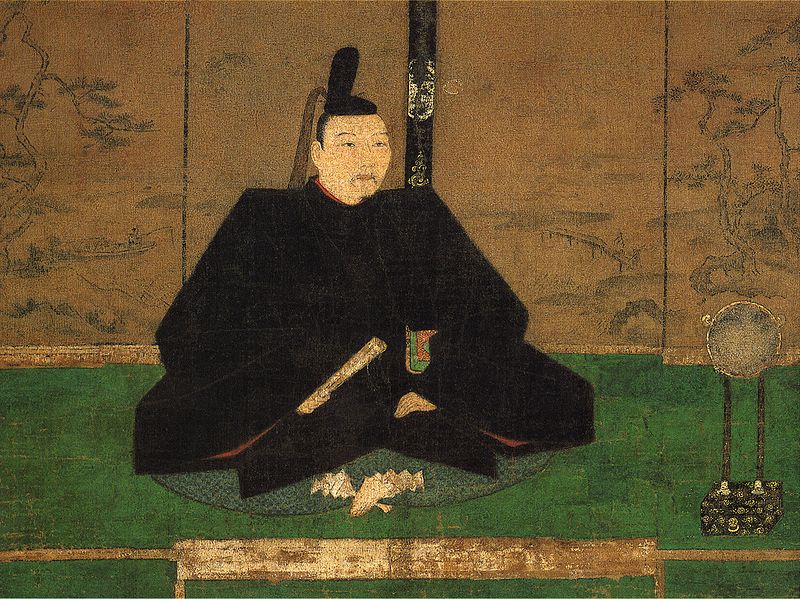<Back to Index>
- Historian and Diplomat Joseph Hormayr, Baron zu Hortenburg, 1781
- Composer Sebastián Iradier Salaberri, 1809
- 8th Shogun of the Ashikaga Shogunate Ashikaga Yoshimasa, 1435
PAGE SPONSOR

Ashikaga Yoshimasa (足利 義政, January 20, 1435 – January 27, 1490) was the 8th shogun of the Ashikaga shogunate who reigned from 1449 to 1473 during the Muromachi period of Japan. Yoshimasa was the son of the sixth shogun Ashikaga Yoshinori.
On August 16, 1443 (Kakitsu 3, 21st day of the 7th month), 10 year old shogun Yoshikatsu died of injuries sustained in a fall from a horse. He had been shogun for only three years. Immediately, the bakufu elevated Yoshinari, the young shogun's even younger brother, to be the new shogun. Several years after becoming shogun, Yoshinari changed his name to Yoshimasa, by which name he is better known.
By 1464, Yoshimasa had no heir, so he adopted his younger brother, Ashikaga Yoshimi, in order to avoid any conflicts which might arise at the end of his shogunate. However, in the next year, Yoshimasa was surprised by the birth of a son. The infant's birth created a conflict between the two brothers over who would follow Yoshimasa as shogun. By 1467 the simmering dispute had evolved, encouraging a split amongst the powerful daimyō and clan factions. The armed conflict which ensued has come to be known as the Ōnin War. This armed contest marks the beginning the Sengoku period of Japanese history, a troubled period of constant military clashes which would last over a century. A number of developments affect the unfolding Ōnin War's battles:
- 1468 – Yoshimi joins Yamana Sōzen.
- 1469 – Yoshihisa appointed heir to shogunate.
- 1471 – Asakura Takakage appointed shugo of Echizen province.
- 1473 – Yamana Sōzen and Hosokawa Katsumoto both die.
In the midst of on-going hostilities, Yoshimasa retired in 1473. He relinquished the position of Seii Taishogun to his young son who became the ninth shogun Ashikaga Yoshihisa; but effectively, Yoshimasa continued to hold the reins of power. With the leaders of the two warring factions dead and with the ostensible succession dispute resolved, the rationale for continuing to fight faded away. The exhausted armies dissolved and by 1477 open warfare ended.
When Yoshimasa declared that Yoshihisa would be the next shogun after he stepped down from that responsibility, he anticipated that his son would out-live him. When Shogun Yoshihisa died prematurely, Yoshimasa reassumed the power and responsibility he had wanted to lay aside. Shogun Yoshimasa adopted the son of his brother, Yoshimi. In 1489, shogun Yoshitane was installed; and Yoshimasa retired again.Before Yoshimasa died in 1490, he again adopted a nephew as heir, this time the son of his brother, Masatomo. Although Yoshitane did outlive Yoshimasa, his shogunate would prove short lived. Yoshitane died in 1493.
Shogun Yoshimasa was succeeded by shogun Yoshihisa (Yoshimasa's natural son), then by Shogun Yoshitane (Yoshimasa's first adopted son), and then by shogun Yoshizumi (Yoshimasa's second adopted son). Yoshizumi's progeny would directly succeed him as head of the shogunate. In the future, power struggles from outside the clan would also lead to a brief period in which the great - grandson of Yoshitane would be installed as a puppet leader of the Ashikaga shogunate.
During Yoshimasa's reign Japan saw the growth of the Higashiyama Culture (Higashiyama bunka), famous for Japanese tea ceremony (Sado), Japanese flower arranging (Kado or Ikebana), Noh Japanese drama, and Indian ink painting. Higashiyama culture was greatly influenced by Zen Buddhism and saw the rise of Japanese aesthetics like Wabi-sabi and the harmonization of imperial court (Kuge) and samurai (Bushi) culture.
In the history of this Higashiyama bunka period, a few specific dates are noteworthy:
- 1459 (Chōroku 3): Shogun Yoshimasa provided a new mikoshi and a complete set of robes and other accouterments for this festival on the occasion of repairs to the Atsuta Shrine in the 1457 – 1459 (Chōroku 1–3).
- 1460 (Chōroku 3): Yoshimasa initiated planning for construction of a retirement villa and gardens as early as 1460; and after his death, this property would become a Buddhist temple called Jisho-ji (also known as Ginkaku-ji or the "Silver Pavilion").
- February 21, 1482 (Bummei 14 , 4th day of the 2nd month): Construction of the "Silver Pavilion" is commenced.
- January 27, 1490 (Entoku 2, 7th day of the 1st month): The former Shogun Yoshimasa died at age 56 in his Higashiyama - dono estate, which marks the beginning of the end of Higashiyama bunka.